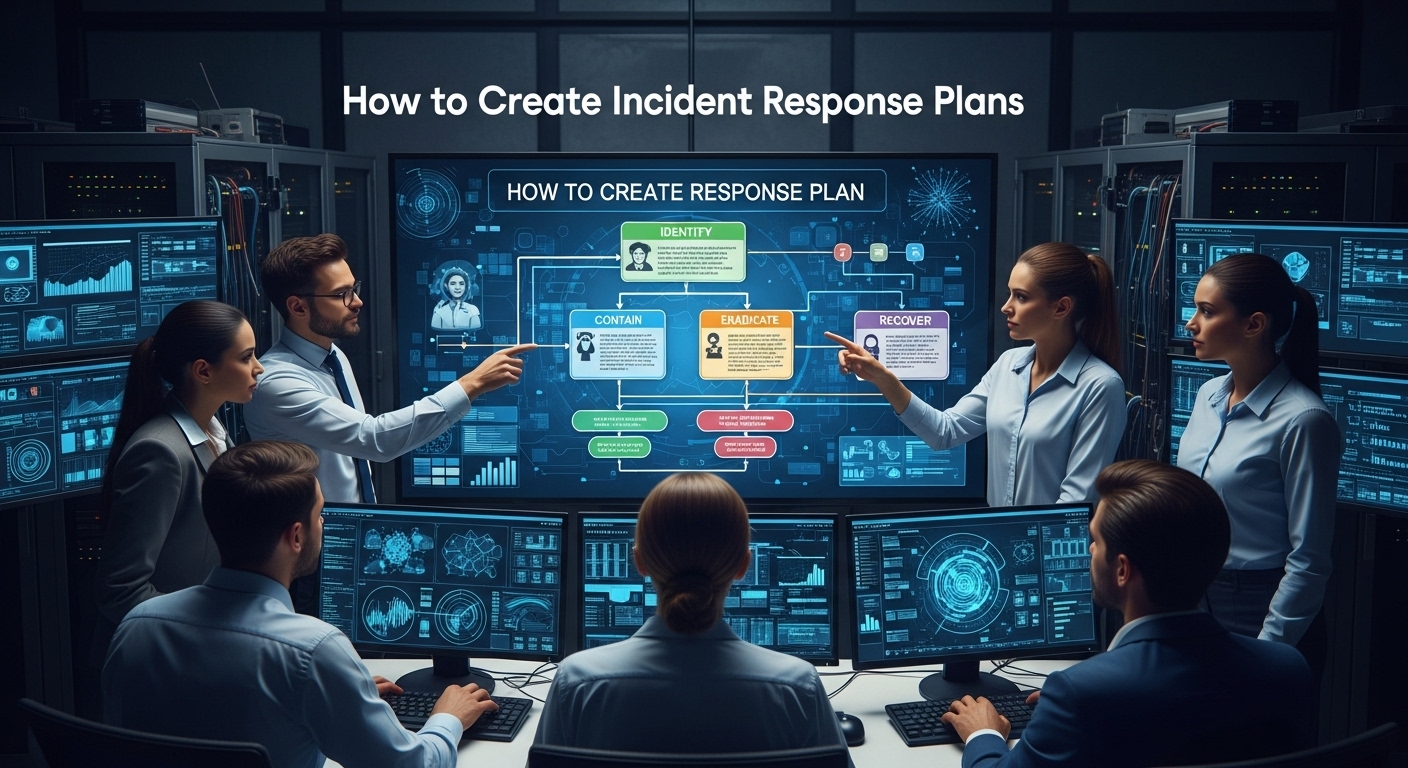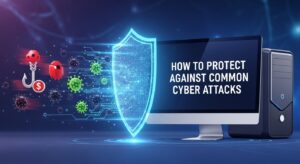Creating incident response plans (IRPs) has become one of the most critical cybersecurity investments organizations can make in today’s threat landscape. With cyberattacks increasing by over 38% year-over-year according to recent studies, having a well-structured response framework isn’t just recommended—it’s essential for business survival.
But here’s a question to consider: When was the last time your organization faced an unexpected disruption? Whether it was a security breach, natural disaster, or system outage, how prepared were you to respond effectively? Understanding your current readiness level is the first step toward building robust incident response plans.
What Makes Incident Response Plans Truly Effective?
Before diving into the creation process, let’s explore what separates successful incident response plans from those that fail under pressure. Think about this: What would happen if your organization discovered a data breach at 2 AM on a weekend? Would your team know exactly who to contact, what steps to take, and how to minimize damage?
Effective IRPs share several key characteristics that we’ll build upon throughout this guide.
Step 1: Establishing Your Incident Response Foundation
The foundation of successful incident response plans begins with understanding your organization’s unique risk profile. Rather than jumping straight into templates, consider these fundamental questions:
- What are your most valuable digital assets?
- Which systems would cause the greatest business impact if compromised?
- What regulatory requirements must your incident response plans address?
Defining Incident Categories
Create a clear taxonomy for different types of incidents your organization might face:
| Incident Type | Examples | Priority Level |
|---|---|---|
| Cybersecurity | Malware, data breaches, ransomware | High |
| System Outages | Server failures, network disruptions | Medium-High |
| Natural Disasters | Floods, fires, earthquakes | High |
| Human Error | Accidental deletions, misconfigurations | Medium |
This categorization helps teams quickly assess severity and apply appropriate response procedures.
Step 2: Building Your Incident Response Team Structure
Who should be involved when creating incident response plans? The answer depends on your organization’s size and complexity, but certain roles are universal.
Consider assembling a cross-functional team that includes:
Core Response Team:
- Incident Commander (overall coordination)
- Technical Lead (system analysis and remediation)
- Communications Lead (internal and external messaging)
- Legal Counsel (regulatory compliance)
- Executive Sponsor (decision-making authority)
The NIST Cybersecurity Framework provides excellent guidance for structuring incident response teams and can serve as a valuable reference when developing your plans.
Step 3: Developing Detection and Analysis Procedures
How quickly can your organization identify when an incident has occurred? This question is crucial because the faster you detect incidents, the more effectively your response plans can minimize damage.
Creating Detection Mechanisms
Your incident response plans should include multiple detection methods:
Automated Detection:
- Security Information and Event Management (SIEM) systems
- Intrusion Detection Systems (IDS)
- Endpoint Detection and Response (EDR) tools
Manual Detection:
- Employee reporting procedures
- Customer complaint analysis
- Routine security assessments
What monitoring tools does your organization currently use? Understanding your existing capabilities helps identify gaps that your incident response plans need to address.
Step 4: Establishing Communication Protocols
Communication often determines whether incident response plans succeed or fail. When incidents occur, confusion and miscommunication can escalate damage exponentially.
Internal Communication Framework
Design clear communication hierarchies within your incident response plans:
Immediate Notification (0-15 minutes)
- Alert core response team
- Activate incident commander
Executive Briefing (15-30 minutes)
- Provide initial assessment
- Secure resources and authority
Stakeholder Updates (30-60 minutes)
- Inform affected departments
- Coordinate with external partners
The SANS Institute offers comprehensive templates for communication protocols that can enhance your incident response plans.
Step 5: Creating Containment and Eradication Procedures
Once incidents are detected and analyzed, your incident response plans must provide clear guidance for stopping the threat and preventing further damage.
Think about this scenario: Your team has identified malware spreading through your network. What immediate steps would you take? Your incident response plans should provide specific, actionable procedures for common scenarios.
Containment Strategies
Different incidents require different containment approaches:
Network Isolation:
- Disconnect affected systems from the network
- Implement firewall rules to block malicious traffic
- Quarantine suspicious files or processes
Data Protection:
- Secure backup systems
- Preserve evidence for forensic analysis
- Protect customer and sensitive information
Step 6: Recovery and Restoration Procedures
How do you safely restore normal operations after containing an incident? This phase of incident response plans often receives less attention but is equally critical for business continuity.
Systematic Recovery Approach
Your incident response plans should outline a methodical restoration process:
Verification Phase
- Confirm threat elimination
- Test system integrity
- Validate security controls
Staged Restoration
- Prioritize critical systems
- Monitor for recurring issues
- Gradually restore full operations
The Cybersecurity and Infrastructure Security Agency (CISA) provides valuable resources for developing recovery procedures within incident response plans.
Step 7: Post-Incident Analysis and Improvement
What lessons can each incident teach your organization? The most effective incident response plans include robust post-incident review processes that drive continuous improvement.
Conducting Effective Post-Mortems
After each incident, your response team should:
- Document timeline and decisions made
- Identify what worked well and what didn’t
- Update incident response plans based on lessons learned
- Provide training to address identified gaps
How often does your organization review and update its incident response plans? Regular updates ensure your procedures remain relevant as threats and technologies evolve.
Testing and Validating Your Incident Response Plans
Creating incident response plans is only the beginning. Without regular testing, even well-designed plans may fail when needed most.
Simulation Exercises
Consider implementing various testing scenarios:
- Tabletop Exercises: Discussion-based scenarios that walk through procedures without actual system changes.
- Simulation Drills: More realistic exercises that test technical procedures and communication protocols.
- Red Team Exercises: Authorized attacks that test your incident response plans under realistic conditions.
What type of testing would be most valuable for your organization’s current maturity level?
Legal and Regulatory Considerations
Modern incident response plans must address increasingly complex legal and regulatory requirements. Different industries face different obligations, but common considerations include:
- Data Breach Notification Laws: Many jurisdictions require notification within 72 hours of discovering personal data breaches.
- Industry Regulations: Healthcare (HIPAA), finance (SOX), and other sectors have specific incident response requirements.
- Evidence Preservation: Proper forensic procedures ensure evidence remains admissible if legal action becomes necessary.
The International Association of Privacy Professionals (IAPP) provides current information on regulatory requirements that may affect your incident response plans.
Technology Tools and Resources
While incident response plans provide the framework, technology tools enable effective execution. Consider evaluating these categories of solutions:
- Security Orchestration, Automation, and Response (SOAR) Platforms: These tools can automate many routine incident response tasks, allowing your team to focus on complex decision-making.
- Forensic Analysis Tools: Specialized software for collecting and analyzing digital evidence during incident investigations.
- Communication Platforms: Secure channels for coordinating response activities and maintaining situational awareness.
Measuring Success and Continuous Improvement
How do you know if your incident response plans are effective? Establishing metrics helps organizations track performance and identify improvement opportunities.
Key Performance Indicators
Consider tracking these metrics:
- Mean Time to Detection (MTTD): How quickly incidents are identified
- Mean Time to Response (MTTR): How quickly response activities begin
- Incident Resolution Time: Total time from detection to full resolution
- Business Impact Reduction: Quantified reduction in damages through effective response
Common Pitfalls to Avoid
Even well-intentioned incident response plans can fail due to common mistakes:
- Over-Complexity: Plans that are too detailed or complicated may hinder rapid response rather than enable it.
- Insufficient Testing: Plans that aren’t regularly tested often contain gaps or outdated information.
- Poor Communication Design: Complex approval chains or unclear notification procedures can delay critical response activities.
- Lack of Executive Support: Without leadership backing, incident response plans may lack necessary resources or authority.
Building a Culture of Preparedness
The most effective incident response plans exist within organizations that prioritize security awareness and preparedness. How can you foster this culture?
Consider implementing ongoing security awareness training, conducting regular drills, and recognizing employees who contribute to incident prevention and response efforts.
Conclusion
Creating effective incident response plans requires thoughtful planning, cross-functional collaboration, and ongoing commitment to improvement. The investment in comprehensive incident response plans pays dividends when incidents occur, potentially saving organizations millions in damages and protecting their reputation.
What’s your organization’s next step in developing or improving incident response plans? Whether you’re starting from scratch or enhancing existing procedures, the key is beginning with a thorough assessment of your current capabilities and building systematically from there.
Incident response plans are living documents that must evolve with changing threats, technologies, and business requirements. Regular review and updates ensure your organization remains prepared for whatever challenges emerge.
The question isn’t whether incidents will occur, it’s whether your organization will be prepared to respond effectively when they do. Strong incident response plans provide that preparation and the confidence that comes with being ready.











